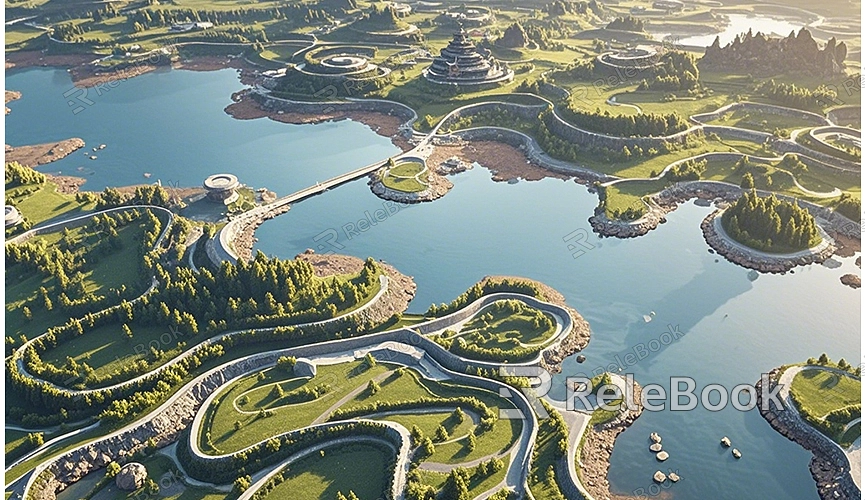How to Render Complex Scenes Blender
Rendering complex 3D scenes is one of the challenges many artists and designers face when using Blender. Whether you're rendering architectural structures, natural landscapes, or character models, handling complex scenes involves managing multiple factors such as lighting, materials, textures, and performance optimization. This guide will provide detailed instructions on how to efficiently render complex 3D scenes in Blender to achieve better results in your projects.
Optimize Scene Models
When rendering complex scenes, the first step is to ensure your models are optimized. High-polygon models offer more detail but can significantly increase rendering time. In Blender, you can use the “Decimate Modifier” to reduce the polygon count of a model without losing too much detail.

Additionally, if your scene contains multiple repeated elements, such as trees or buildings, consider using instancing. This technique can effectively reduce memory usage since instanced objects share the same geometric data.
Set Up Proper Lighting
Lighting is crucial for rendering complex scenes. In Blender, you can use various types of lights, including point lights, spotlights, and HDRI environment lighting. For complex scenes, using HDRI images is recommended to simulate more natural and realistic environmental lighting. If you need high-quality HDRI images for your models and virtual scenes, you can download them for free from [Relebook](https://textures.relebook.com/).
By adjusting the brightness, angle, and shadows of your lights, you can highlight key parts of your scene while ensuring that the overall render has depth and dimension. Additionally, performing light tests before rendering is important. Set up a few lights and render small samples to observe the light effects and adjust as needed.
Use Appropriate Materials and Textures
The choice of materials and textures greatly impacts the quality of the final render. To make your scene more realistic, you need to carefully select and adjust materials. Blender’s node editor is a powerful tool that allows you to create custom material effects.
High-quality textures are indispensable, especially when dealing with complex scenes. Textures not only add detail to models but also enhance surface complexity through normal maps, displacement maps, and other techniques. If you need a large number of 3D textures, you can download high-quality ones from [Relebook](https://textures.relebook.com/).
Use Render Layers and Passes
Blender offers “Render Layers” and “Render Passes” features that allow you to render different parts of the scene separately and process them individually. This is particularly useful when rendering complex scenes, especially when you need to apply different post-processing to certain elements. By using layer-based rendering, you can better control the effects of each element and reduce issues related to rendering failures or excessive time.
Render Layers enable you to group objects in the scene and render each group separately. Render Passes allow you to separate different rendering information (such as color, shadows, lighting, etc.) for easier adjustment in post-production. These features help you manage complex scene rendering more effectively.
Control Render Settings to Reduce Time
Rendering complex scenes typically takes a long time, so optimizing render settings to reduce time is essential. First, check your sampling settings. For preview renders, lower sampling rates can save time; however, for final renders, it's advisable to increase the sampling rate for higher quality.
Additionally, utilize Blender’s “Adaptive Sampling” feature, which can reduce render times without sacrificing quality. Adaptive Sampling automatically adjusts the sampling rate for each pixel based on the scene’s complexity, thus minimizing unnecessary computations.
Another way to reduce render time is to use the “Denoising” feature. Blender’s built-in denoising tool can effectively reduce noise in renders, allowing you to achieve clear images even with lower sampling rates.
Final Adjustments to Render Settings
When rendering complex scenes, it’s recommended to enable “Limit Global Illumination” and “Simplify” options in the render settings. While global illumination enhances realism, it also significantly increases render time. In most cases, limiting its impact can effectively balance quality and efficiency.
The Simplify option allows you to reduce the complexity of certain elements (such as subsurface scattering, volumetric lighting, shadows, etc.) to decrease render time. Adjust these parameters according to your project needs to improve render speed while retaining sufficient detail.
Rendering complex scenes requires not only detailed models and materials but also a thorough understanding of lighting, render settings, and optimization techniques. By optimizing effectively, setting up appropriate lighting, and selecting the right materials, you can efficiently render complex 3D scenes in Blender. Remember to use HDRI images to enhance environmental lighting and manage render times efficiently. If you need high-quality 3D textures and HDRIs, you can download them for free from [Relebook](https://textures.relebook.com/). For stunning 3D models, visit [Relebook](https://3dmodels.relebook.com/), which offers a wide range of premium 3D resources to help you create outstanding 3D works.

